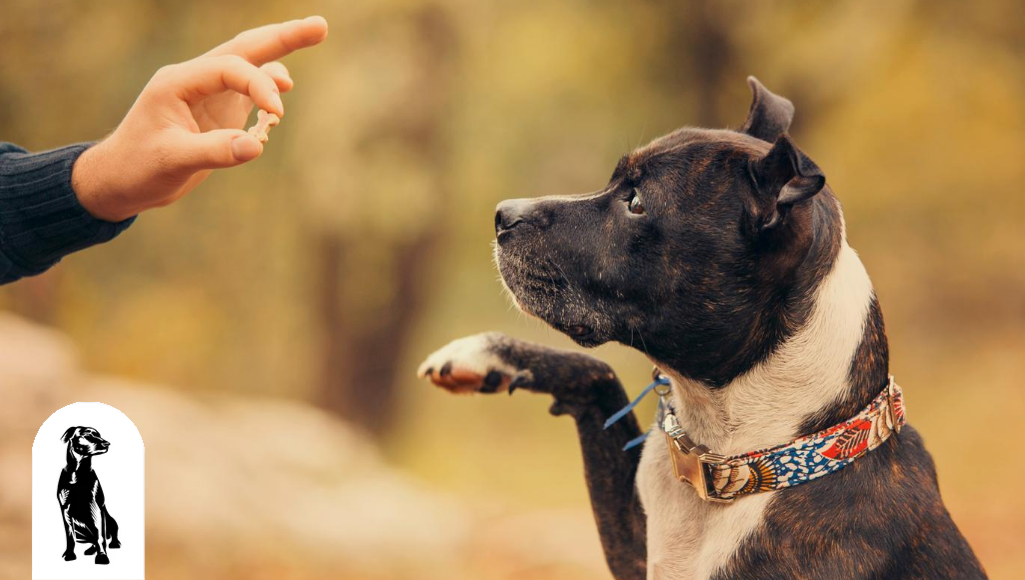
Dog training can be a difficult thing to master. You may think your dog won’t train because of stubbornness, so you give up. However, several factors affect the training. It may have nothing to do with being stubborn but about the trainer.
Read further to learn about why some dogs refuse to train and what you can do to turn it around.

Why Dogs Won’t Train
Is your dog ignoring you or the trainer? Sometimes, the trainer is the culprit, not your dog. Does your pup feel comfortable with the trainer? Is the trainer friendly and offer rewards for each task? Is this training individual or done in a group setting? What about your family members? When in training, it’s integral to ensure there’s consistency and that everyone is on the same page; this means everyone in the household needs to be aware of the training and contribute to it. Training a dog does not good if all involved won’t stick to supporting the training. It has to be a unified effort.
The timing of the training is also a factor. You can’t expect to train a dog right after you get them. It takes time for everyone, including your pup, to integrate into a household. They need to settle in a new environment to qualm anxieties and stress before adding a trainer to the mix. Another thing to consider is whether you’re ready to train or not. Remember, you have to be committed to the task, no matter how long it takes. Patience is also a considerable factor when training a dog.
The breed of dog, her age, and the environment plays a big role in whether a dog trains well or needs some adjustments. Here are some dog breeds difficult, but not impossible, to train.
Dog Breeds Difficult To Train
The hardest learners to train include these breeds:
- Afghan Hound – Although a faithful and lovable dog, these hounds are notorious for training challenges. The reason being is that hounds are independent at heart and aloof to authority. This doesn’t mean they can’t be trained but that it takes positive reinforcement with food rewards and doing it when young. The phrase, “You can’t teach old dogs new tricks,” is particularly relevant to hounds.
- Basenji – This independent breed does best when crate trained because of its stubborn personality. Even though they do great with command knowledge, getting them to perform is always an issue. They use their innate intelligence to demand attention and get what they need or want, which is a manipulation tactic they know all too well.

- Basset Hound – Another hound known for its stubbornness, the basset hound will do things for food, but if there’s no reward, they won’t obey. If you’re a first-time owner, it may make it very difficult to train this breed, so keep that in mind. Patience is your key to training.
- Beagle – Wonderful and loyal dogs, beagles are fun to interact with but are challenging to train. Because they have a naughty streak, training them is difficult, even for the seasoned dog owner. They will obey temporarily, so it’s vital you stay consistent with beagles.
- Bloodhounds – Here we go with another hound. Do you see a pattern? Bloodhounds are great as athletes and for tracking, but their independent spirit makes them a huge challenge to train. With no incentive or motivation to train, it’s going to take a well-trained and experienced trainer for success.
- Bulldog – They don’t call them bulldogs for nothing! Their stubborn propensity to train can be frustrating for their owners, and is why for this breed, almost immediate training is recommended. Once they realize you’re the boss and must follow your instructions, they will try and buck you. Be firm and consistent in teaching bulldogs important commands, and most importantly, training needs to be short and sweet (dog treats) to work.

- Chow chow – Known for the lovable “teddy bear” look, chow chows act more like a cat – stubborn, independent, and less eager to please than their counterparts. Early socialization and training, coupled with an equally stubborn owner, is the recipe for training success.
- Dalmatian – This breed makes a great guard dog, and even though agreeable most of the time, they will challenge you when you want them to do something. Dalmatians can be obstinate and manipulative, making them difficult to train. They need consistency in guidance, or else they can develop unwanted habits that include growling, biting, jumping, or snapping.
- Fox Terriers – With both the smooth and wire types, fox terriers have plenty of energy, but their attention spans are minimal when it comes to training. In other words, terriers can be, well, terrors. It’s crucial to be patient with this breed and take your time.
- Irish Setter – The high-energy setter will make training them a not-so-great task. Because of their high spirits, it can make them hard to train for a long time. Start with short, positive training sessions, best for these sensitive, upbeat dogs. According to the Irish Setter Club of America, these dogs are slow-maturing — mentally and physically. They will stay a cute puppy for longer, but that just means they will take more extended periods to train.
- Kerry Blue Terrier – Another terrier that only does what it wants, when it wants, the Kerry blue is quite intelligent; this requires training by a consistent, no-holds-barred trainer that uses positive reinforcement but a firm stance on obedience.
- Mastiff – The mastiff’s great personality can be overshadowed by their difficulty to training; In fact, they only train with gentle and fun techniques, due to their sensitive nature, and do best when young and coupled with socialization.

- Pekingese – These small dogs have a big personality — they are intelligent and opinionated, making them hard to train. As a puppy, they are cute but don’t mistake their cuteness for willingness to obey. Still, it’s key to start young and continue training, so it becomes a lifestyle, and remember to be patient.
- Pug – Yes, pugs want to please their owners, but they still are hard to train and can be quite mischievous as puppies. These cute dogs won’t train easily, according to the American Kettle Club, this breed won’t train quickly. It may take many months or even a year or more to train them.
- Weimaraner – Between their high-energy level and intelligence, Weimaraners are strong-willed. They love exercise and need lots of it, but they need owners who can take charge. Another breed that acts like a puppy for longer than other breeds, be prepared to spend a lot of time training and socializing them.
What Should I Do?
If you don’t have the above breeds, just know that training your dog is possible and may not be that hard. In many situations, it may be that your pup hasn’t learned what you want him to do. Instead of scolding him for misbehaving, it’s important to focus on rewarding for behaving. When you remove a behavior, it has to be replaced with something. Moreover, instilling fear into your dog does the opposite and can lead to avoidance (flight) freezing, or aggression (fight). Just like children do better when praised for their good behavior, dogs are the same.

One thing to remember is to avoid confinement when you’re home. This allows them to get familiar with their environment and feel comfortable and will enable you to intervene, showing your pup the appropriate behavior. When dogs do something wrong, treating dogs with inattention, and attention, when they do something right, is the best bet when training dogs. Punishment is a form of attention and will lead to defiant behaviors, but praising when ceasing the behavior and redirecting to a new, acceptable behavior can be successful.
Protect Your Seats While Training
Training can take its time and toll on car seats. If your pup hasn’t been housebroken and gets excited in your car, they may piddle on your seats. To protect your upholstery, you need the best seat covers. Our high-quality covers come in various colors, styles, and sizes to match your vehicle perfectly. Get these premium covers for your car today.

